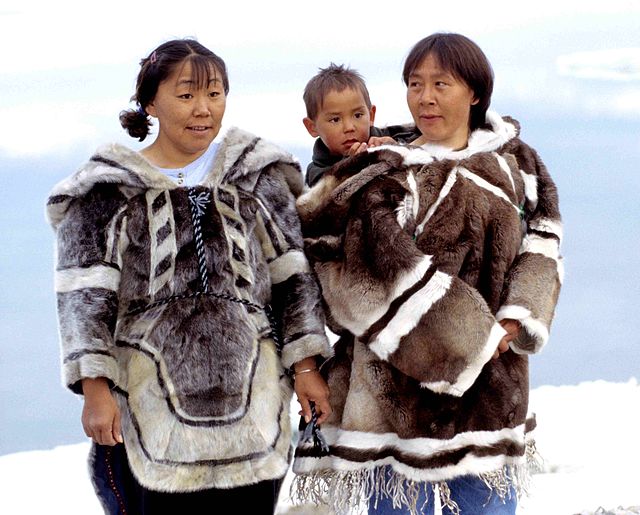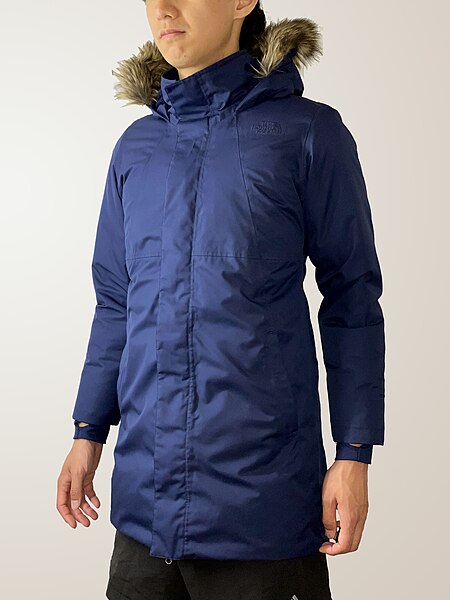Traditional Inuit clothing is a complex system of cold-weather garments historically made from animal hide and fur, worn by Inuit, a group of culturally related Indigenous peoples inhabiting the Arctic areas of Canada, Greenland, and the United States. The basic outfit consisted of a parka, pants, mittens, inner footwear, and outer boots. The most common sources of hide were caribou, seals, and seabirds, although other animals were used when available. The production of warm, durable clothing was an essential survival skill which was passed down from women to girls, and which could take years to master. Preparation of clothing was an intensive, weeks-long process that occurred on a yearly cycle following established hunting seasons. The creation and use of skin clothing was strongly intertwined with Inuit religious beliefs.

Women's traditional caribou skin outfit with amauti parka, trousers, mitts and long boots with side pouches. The back of the parka has an amaut or pouch for carrying a baby. From Baker Lake, Eskimo Point and Hikoligjuaq, west of Hudson Bay. Collected on 5th Thule Expedition, 1921–1924
Modern women's parka created by Inuk designer Victoria Kakuktinniq, 2021. The body of the parka is made from synthetic waterproof fabric, with silver fox fur trim on the hood and sealskin trim on the hem and cuffs. The curved hem is typical of the traditional amauti.
Man's parka and pants, southern Baffin Island Inuit, Hudson Bay (1910–1914), Royal Ontario Museum
Modern Inuit women in traditionally constructed amauti (woman's parka); left: seal, right: caribou (Igloolik, Nunavut, 1999)
A parka and anorak is a type of coat with a hood, often lined with fur or faux fur. These two kinds of garments are staple of Inuit clothing, traditionally made from caribou or seal skin, for hunting and kayaking in the frigid Arctic. Some Inuit anoraks require regular coating with fish oil to retain their water resistance. Parkas are typically longer, often extending to the thighs or knees. Anoraks are usually shorter than parkas, often hip-length, and are traditionally a pull-over jacket.
A modern down parka with faux-fur trim on the hood
A fawn-brown and grey waist-length fur cape, with long sleeves and a hood. Sealskin woman's parka discovered at Qilakitsoq in 1972, dated to c. 1475.
A traditional Inuit anorak made of gutskin.
An Inuit family wearing traditional Caribou parkas.








